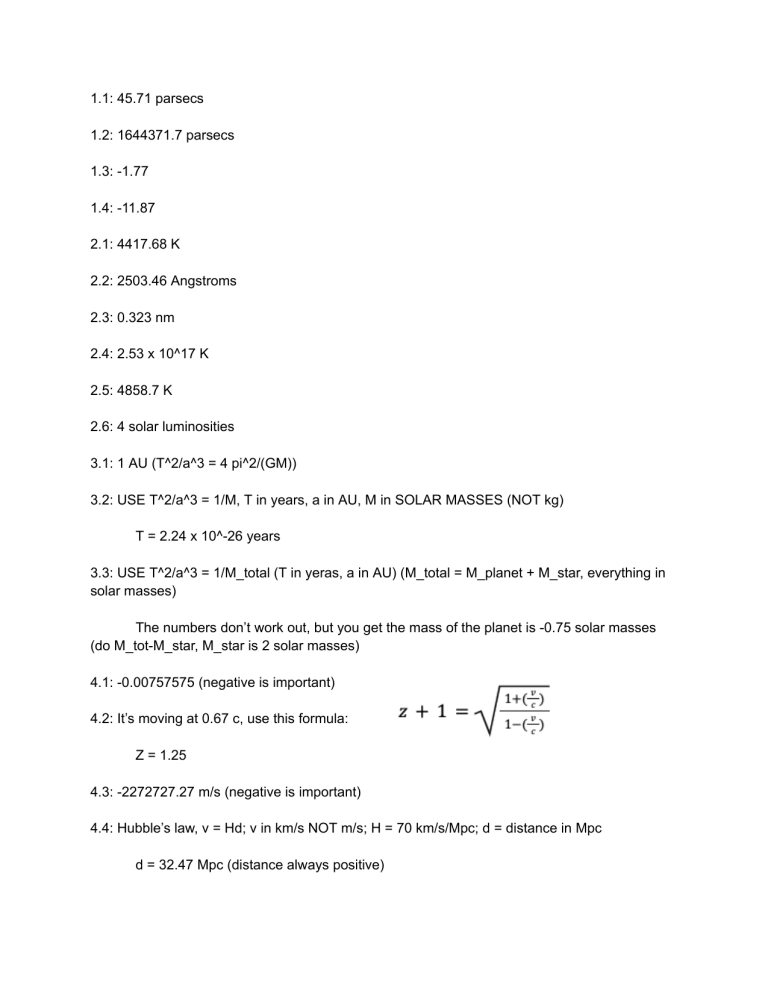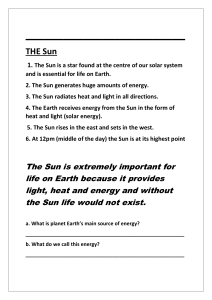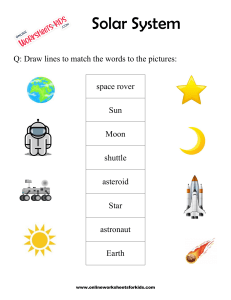
1.1: 45.71 parsecs 1.2: 1644371.7 parsecs 1.3: -1.77 1.4: -11.87 2.1: 4417.68 K 2.2: 2503.46 Angstroms 2.3: 0.323 nm 2.4: 2.53 x 10^17 K 2.5: 4858.7 K 2.6: 4 solar luminosities 3.1: 1 AU (T^2/a^3 = 4 pi^2/(GM)) 3.2: USE T^2/a^3 = 1/M, T in years, a in AU, M in SOLAR MASSES (NOT kg) T = 2.24 x 10^-26 years 3.3: USE T^2/a^3 = 1/M_total (T in yeras, a in AU) (M_total = M_planet + M_star, everything in solar masses) The numbers don’t work out, but you get the mass of the planet is -0.75 solar masses (do M_tot-M_star, M_star is 2 solar masses) 4.1: -0.00757575 (negative is important) 4.2: It’s moving at 0.67 c, use this formula: Z = 1.25 4.3: -2272727.27 m/s (negative is important) 4.4: Hubble’s law, v = Hd; v in km/s NOT m/s; H = 70 km/s/Mpc; d = distance in Mpc d = 32.47 Mpc (distance always positive) 5.1: By simple trigonometry, angular diameter (in radians) = actual diameter/distance (actual diameter and distance have to have the same units, but the actual unit doesn’t matter) 1 arcsecond = 1/3600 of a degree, then convert to radians Make sure to double the star’s radius to get diameter Distance = 5.78 x 10^15 m 5.2: d=1/p, d in parsecs and p in arcseconds Make sure to convert to light years D = 1.63 x 10^8 light years 5.3: Two step problem: First calculate the distance using the formula in 5.1, then use d=1/p Don’t forget to convert distance from meters to parsecs Parallax angle = 5.35 arcseconds 6.1: IMPORTANT FORMULA: Lifetime of a star = 10^10 years/(M^2.5), M in solar masses Lifetime = 10^10 years (10 billion years) 6.2: E=hf, h is planck’s constant and f is frequency. E = 3.313 x 10^-31 J 6.3: c = wavelength times frequency, make sure units are good (1 THz = 10^12 Hz) Wavelength = 3 x 10^-5 meters 6.4: Same formula as 6.3, frequency = 4.05 x 10^14 Hz (405 THz)




